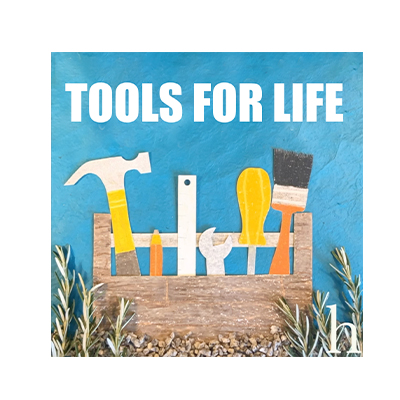Resilience in isolation
by Hoffman features editor Nikki Wyatt
 This strange but precious time
This strange but precious time
This period is going to be very different for each of us. You may be vulnerable and self-isolating, adapting to working from home, unexpectedly redundant, a key worker suddenly stretched to capacity or even someone who’s gone back to work to help. As if that isn’t enough, many of us are now being asked to home educate our children. It can be easy to feel hopeless or overwhelmed.
The best antidote is to do whatever’s necessary to reach a calm state – such as a walk, a visualisation, a chat with a close friend – then timetable activities wherever you can, including relaxation, sleep and exercise.
Parkinson’s Law says that work expands to fit the time available, but it’s not just work. Any activity needs to have boundaries or you’ll look back and wonder where the days went, why it’s hard to motivate yourself or why things feel chaotic.
If you work from home, designate a space so there’s a clear physical boundary. That way those you live with know when you’re working. How about a light-hearted sign on your door or a Post-it in front of your laptop showing when you need to concentrate. If you’re with children, let them have fun designing it.
Set times when you’re offline and unavailable for work. If you literally never switch off, you’ll burn out – and right now, your health’s a priority both for your own sake and those you care for.
 Acceptance is empowering
Acceptance is empowering
If we have open-ended unscheduled time we may either revel in it or feel rudderless, depending on our personality. Some of us will be time-poor, working overtime or finding our hands full with children unexpectedly at home. Whatever your reality, it will feel worse if you kick against it.
Our first job is to look at ‘what is’, however difficult, because if we don’t accept it we can’t create anything better, find solutions or notice the positives and the resources open to us.
- One way to acknowledge what’s going on is to journal. Putting pen to paper helps you order your thoughts and admit to your feelings. Once your feelings are named on paper, put your hand on your heart, breathe and feel compassion for yourself.
- Give yourself a hug or cuddle a pet and appreciate how well you’re doing. Know that you’ll get through this.
- Note your resources. Include people and services as well as your own qualities. Most of us have family members who have lived through really difficult times and we can connect to their gifts of resilience and courage. A photo of an inspiring ancestor might be an inspiring focus right now.
 Filters Aren’t Just For Coffee
Filters Aren’t Just For Coffee
We’re all human and some of us are more influenced by the outside world than others. Now is the perfect time to notice your mood after a phone call, screen time or any other activity. As you go through your day, ask yourself what lifts your spirits and what sends you into a downward spiral?
Limit your exposure to people and programmes that bring you down. Yes, you need to know what’s going on in a fast-moving situation but having ‘breaking news’ streaming in the background will feed negative thinking. Decide on a trusted source of updates and check in once or twice a day for a limited time, then focus on more positive thoughts and activities.
If certain people habitually discuss doom and gloom scenarios, either change the subject or limit your contact. Discover who drains you and who leaves you upbeat. Choose books and podcasts to keep your spirits up.
 Let’s Get Physical
Let’s Get Physical
It’s only human to feel disappointed, angry, frustrated and scared and pushing those feelings down will only intensify them, so find a constructive way to channel them. If you don’t, your head goes into overdrive and your body fills up with pent up emotions. It’s a recipe for lying awake at night with a whirring mind.
Rip up paper, chop wood, wring out clothes, jump up and down to flatten cardboard, play the drums, hit a punchbag, whack a ball against a wall, strip wallpaper or go for a run – it will all help you let off steam.
There are lots of online fitness and dance classes that will also provide daily structure. Whatever regime you decide to follow, do it when you feel most motivated before apathy can set in. For some of us that’s first thing, or you might prefer lunchtime to break up the day or early evening to mark the end of the work day.
 Find Your Groove
Find Your Groove
What makes you happier – listening to the news or your favourite song? Our lives are full of noise: the beeping of our alarm, programmes or podcasts we listen to on our daily commute, the voices of colleagues, the chat around the water cooler or coffee machine,the roar of traffic or planes overhead and the clatter of trollies. We even have a ‘nosescape’. If you closed your eyes on a normal day, you’d probably have noticed the smell of coffee, food, printer ink or traffic fumes.
All that’s changed – and it can be disorientating. At a time when we may feel the world is spinning out of control it can be empowering to make conscious choices about your environment.
For example, it’s been shown that playing classical music in the background is very calming to the nervous system. What ‘nosescape’ and soundtrack will you choose? The sound of birdsong, the lapping of water, the scent of fresh flowers and essential oils – playlists that bring back happy memories and that get you up and moving or relax your body and soothe your soul.
For those of you who have done the Hoffman Process, you can find lots of help with tools to support all the ideas above on our Post Process page: Visualisations, Spotify playlists, tips for cathartic release and other great tools.






 Sign up to receive monthly newsletters from Hoffman
Sign up to receive monthly newsletters from Hoffman